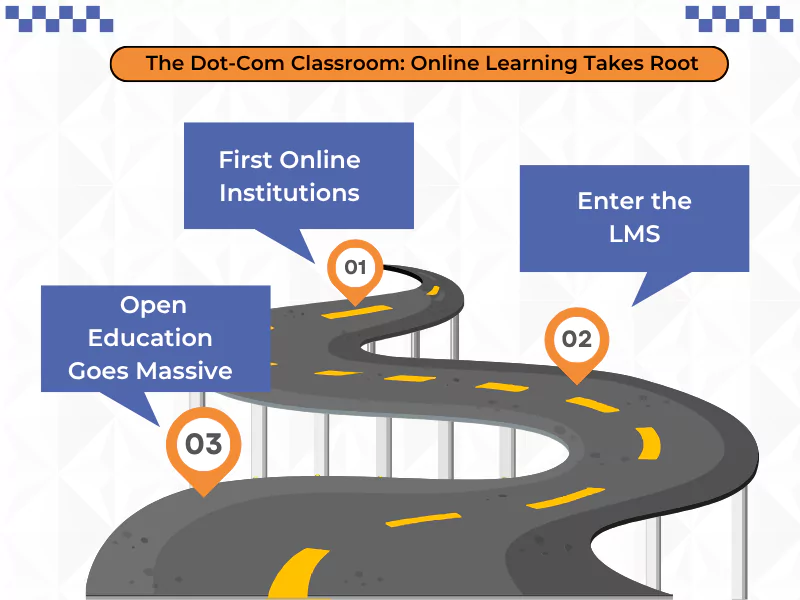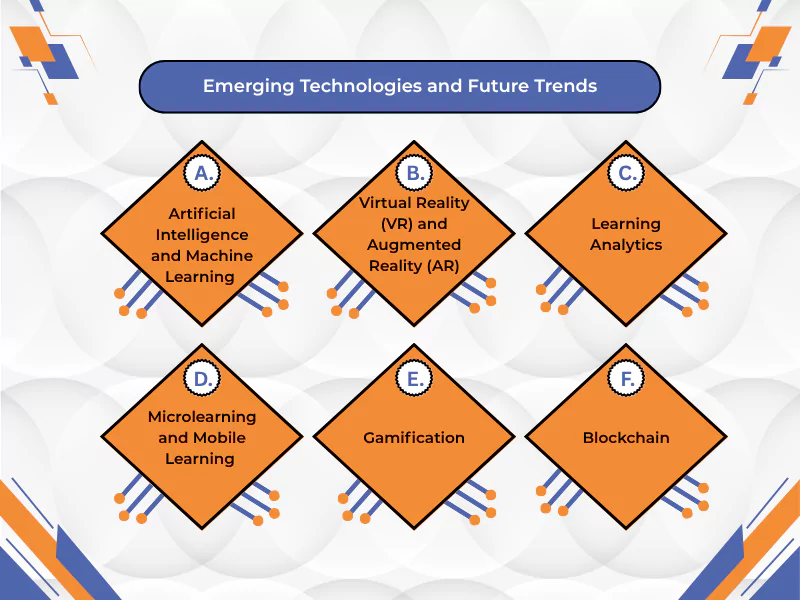When was the last time you visited a library to find a book that could help you complete a project? Don’t stress it, it’s probably been a while. Today, everything is available online. You need some information; you can simply search for it online. That’s how millions of students work on their projects.
Today, education has broken free from four walls and can be accessed at the click of a button. The digital landscape has become so sophisticated that students seeking assistance for challenging coursework often search for specialized academic support, sometimes referred to as services to take my online class. With that in mind, let’s delve deep into the evolution of online classes and learn how slow-to-arrive physical study guides transformed to virtual reality labs.
Let’s get started!
Table of Contents
ToggleBeyond the Classroom Walls: The Dawn of Distance Learning
The concept of learning from home has its roots in the 1840s. Isaac Pitman’s shorthand system, taught through mail, is often considered an early example of distance learning, the precursor to online learning. Let’s take a look at how online learning shaped up with a look at the past:
A. Snail Mail Scholars: The Rise of Correspondence Courses
Before the emergence of the Internet, learning by mail was the cutting edge. Students used to get lessons through the mail and send completed assignments back. This process paved the way for ‘correspondence colleges’ that helped students who were unable to attend traditional schools get educated.
B. Airwaves to Classrooms: Radio and Television Education
With the advancement of technology, educational reach has also increased. Radio stations, like the one pioneered by the University of Wisconsin, began broadcasting lectures. Later, television brought college classes directly to homes. All of these brought a significant leap in broadcasting knowledge to a large audience.
C. Digital Seeds: Early Computer-Based Training (CBT)
The emergence of early computers formed the true digital roots of online learning. University of Illinois’ PLATO can be considered one of the first online learning platforms that offered groundbreaking interactive learning experiences, even with early graphics. While it required access to large mainframe computers, these laid the foundation for the present dynamic online content and self-paced instruction.
With that knowledge in mind, let’s move on and learn about the rise of online learning platforms.
The Dot-Com Classroom: Online Learning Takes Root

The 1990s and early 2000s played a significant role in the rise of online class platforms. The advent of the World Wide Web made online learning more accessible and paved the way towards the development of Learning Management Systems (LMS) and online degree programs.
A. The First Online Institutions
The emergence and widespread adoption of the World Wide Web led various institutions to offer full degrees online. One of the key players during that time, the University of Phoenix, started offering virtual college education. Institutions like Jones University soon followed suit. This helped prove that accredited learning can fully happen on the web.
B. Enter the LMS: Orchestrating the Virtual Classroom
Scalability of online learning came with the introduction of learning management systems like Blackboard and Moodle. The online class platforms offered the digital infrastructure that was needed to strengthen online learning. These helped educators organize courses, share content, manage assignments, and track student progress, thus helping in converting scattered web pages into structured, virtual learning environments.
C. The MOOC: Open Education Goes Massive
Massive Open Online Courses (MOOCs) are one of the major phenomena that emerged at the end of this period. Various online learning platforms started offering free to low-cost courses from top universities to any student with a stable internet connection.
That paved the way to what online education is today. Let’s understand how the online form of learning took the center stage and how it became so popular.
The New Normal: Online Education Takes Center Stage
Presently, you might not find anyone complaining about online education technology. What made virtual classrooms so popular, and how did they get accepted by all? Here’s a detailed breakdown of the ways online education became mainstream with time:
A. Access to High Speed Internet and Smartphones
The availability of high-speed internet globally during the 2010s, along with smartphones and tablets, helped online class platforms reach out to a wider audience. With the online mode not being restricted to desktops, students were able to access courses, content, and collaborate on the go. This not only made online courses accessible but also flexible.
B. Richer Content and Engaging Design
Time and experience have made the online platforms more mature. They moved beyond simple and static pages and integrated diverse, high-quality content formats. This helped improve the learning experience, making online courses more engaging and effective.
C. The Rise of Hybrid Learning Models
The institutions understood how combining the best of both worlds, face-to-face interaction and online activities, can make learning more effective. The approach offered flexibility while retaining the value of face-to-face interaction. It strengthened online learning and proved that it is not a substitute but the way forward.
D. Focus on Practical Application and Professional Development
Continuous learning is the need of the hour. The rapid pace of technological change and the evolving job market demand continuous learning and staying updated with the trends. Online platforms are playing a major role in offering highly specialized, practical skill-based courses and professional development programs. These are in line with the current need for upskilling and reskilling.
The digital education evolution, from shorthand courses to skill-based courses, is remarkable. While the virtual classrooms already have a lot to offer, there’s no end to being curious about the future of e-learning. The ‘take my online class’ services are also making their presence felt in the evolving landscape of online education.
What’s Next? Emerging Technologies and Future Trends

Emerging technologies are reshaping how we look at online education. The future trends in virtual classrooms will soon include:
A. Artificial Intelligence and Machine Learning
AI is revolutionizing online education by offering personalized learning, recommending learning paths, and real-time feedback and support. The AI tools can analyze student performance and suggest learning patterns based on students’ learning styles.
B. Virtual Reality (VR) and Augmented Reality (AR)
Immersive and interactive learning environments that allow students to explore virtual worlds, conduct simulations, and engage with learning content make learning more engaging for students.
C. Learning Analytics
Learning analytics can help educators personalize support, improve course content, and improve overall learning outcomes.
D. Microlearning and Mobile Learning
Short and focused learning modules delivered on mobile devices are popular and will be more popular in the coming days. This will help cater to the needs of busy learners and working professionals.
E. Gamification
Implementing game design elements like points, badges, and leaderboards in online learning can enhance student engagement and motivation.
F. Blockchain
Blockchain technology can help build secure and transparent verification of academic credentials and certifications, thus ensuring the authenticity of online learning achievements.
The future of online class platforms is bright. Continuous advancement of technology will make learning more flexible and engaging for all.
Conclusion: The Ever-Evolving Landscape of Online Education
Online learning has come a long way to become what it is today. From mailing assignments and courses to a complete classroom experience from home, online education has grown in leaps and bounds. The emerging technologies are strengthening the grounds of learning online and making things more accessible for all.
It is safe to say that online education will soon be more dynamic, personalized, and increasingly digital and will offer more opportunities to learners across the world.

